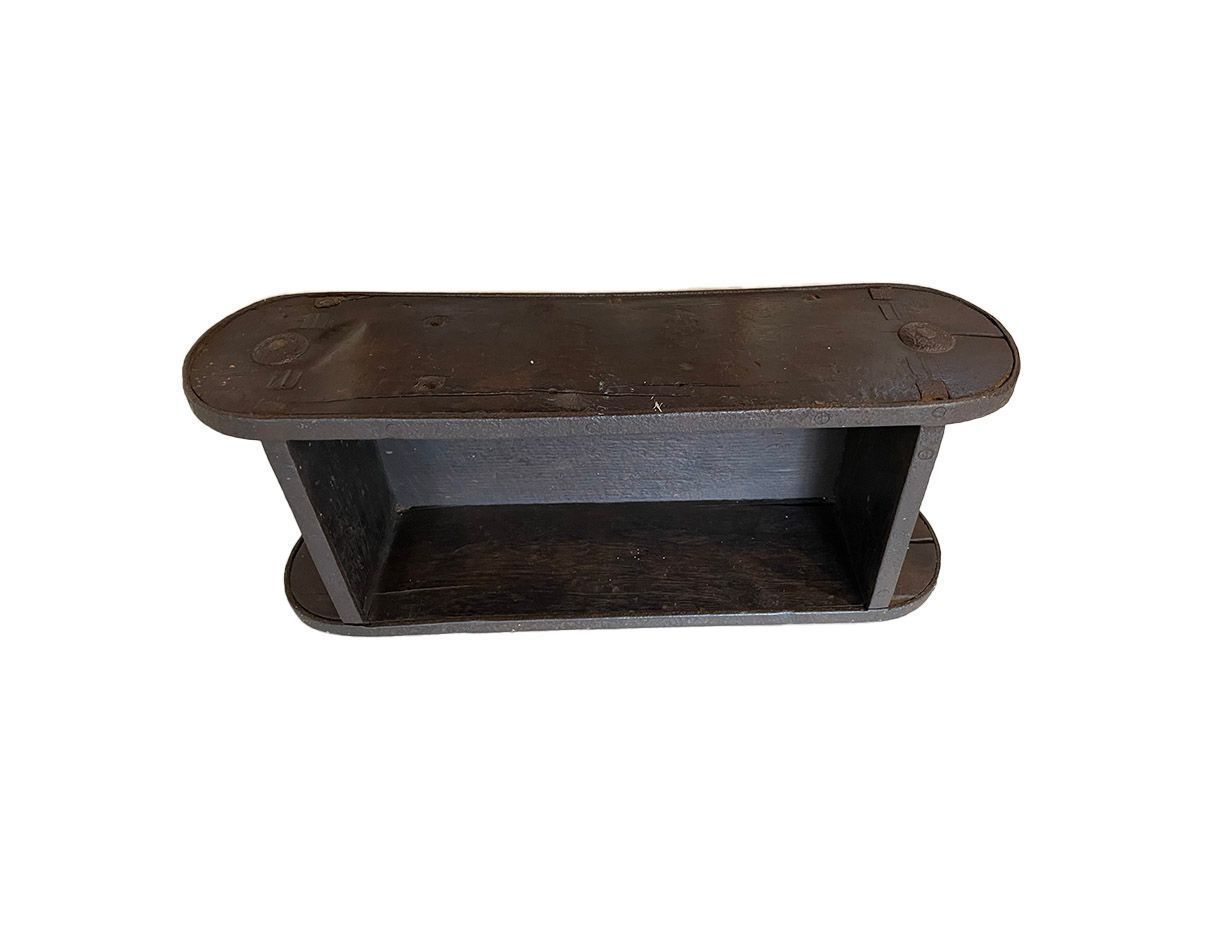Brick Mould
Name/Title
Brick MouldEntry/Object ID
2025.1.359Description
Wood mould with metal frame and base.Context
Bricks have been made for centuries but the method hasn't not changed radically. The process is simple, clay is kneaded to a smooth dough, rolled out, cut to shape, left to dry and then fired in a very hot kiln. Different clays make different coloured bricks and also different types of bricks. For example the best fire brick clay was originally from Glenoig in Strathclyde. Historically it was a seasonal trade - the clay being dug in the autumn and winter allowing for the frost and rain to weather it before commencing work in the spring. There are three basic styles of brick - visual, strength and common. The clay can be used wetter or dryer depending on the type of brick desired. The pug-mill was invented in the 17th century (a vertical tub of wood with a central shaft from which projected horizontal knives). The clay was fed in the top and extruded from the bottom, producing a smoother consistency. The Romans chose hard flat ground covered with sand and a wooden frame set on top, to mould their bricks. After the clay was dry , the frame was removed. In the late 12th century a pallet mould was used, which was nailed to a stock board on a bench. The worked clay was thrown into the mould and the excess cut off with a wire. Then the full mould talken off the stock board and set to dry.Category
Tools

